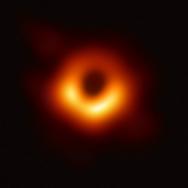University of Chicago scientists have made a new measurement of how fast the universe is expanding—using an entirely different kind of star than previous endeavors. That value falls in the center of a hotly debated question in astrophysics that may call for an entirely new model of the universe.
Scientists have known for almost a century that the universe is expanding, but the exact number for how fast it’s going has remained stubbornly elusive. In 2001, Prof. Wendy Freedman led a team that used distant stars to make a landmark measurement of this number, called the Hubble constant—but it disagrees with another major measurement, and the tension between the two numbers has persisted even as each side makes more and more accurate readings.
In a new paper to be published shortly in the Astrophysical Journal, Freedman and her team announced a new measurement of the Hubble constant using a kind of star known as a red giant. Their observations, made with NASA’s Hubble Space Telescope, indicate that the expansion rate for our corner of the universe is just under 70 kilometers per second per megaparsec—slightly smaller than their previous measurement, but not alleviating the tension.
“The Hubble constant is the cosmological parameter that sets the absolute scale, size and age of the universe; it is one of the most direct ways we have of quantifying how the universe evolves,” said Freedman, the John and Marion Sullivan University Professor in Astronomy and Astrophysics and a world-renowned astronomer. “The discrepancy that we saw before has not gone away, but this new evidence suggests that the jury is still out on whether there is an immediate and compelling reason to believe that there is something fundamentally flawed in our current model of the universe.”












 —Prof. Chuan He
—Prof. Chuan He
